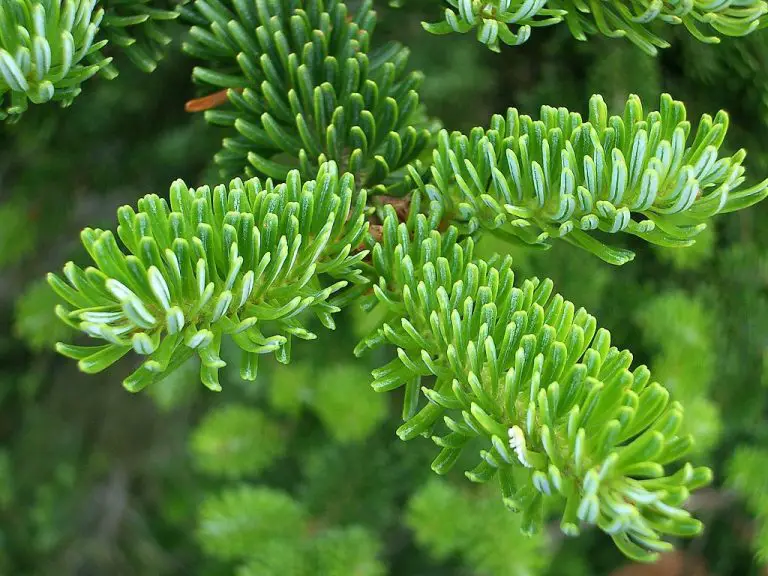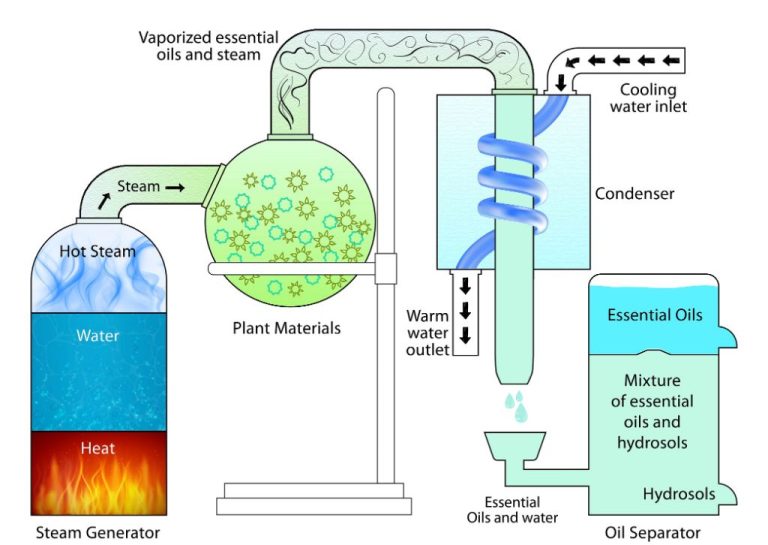What Does Citrus And Sage Smell Like?
Introducing Citrus and Sage Scents
Citrus and sage are two popular botanical scent categories frequently used in perfumes, candles, aromatherapy, and household cleaning products. Citrus scents come from the rind oils of citrus fruits like oranges, lemons, limes, and grapefruits. They are bright, fresh, and fruity smelling. Sage scents derive from the sage plant, an aromatic herb in the mint family. They have an herbal, earthy, and slightly medicinal aroma.
Both citrus and sage scents are appreciated for their ability to energize, uplift moods, and promote feelings of cleanliness. Citrus oils like lemon and orange are often added to cleaning products for their fresh and sanitizing properties. Sage has a long history of being used as incense and smudging for its cleansing effects. The tangy, zesty quality of citrus oils and the earthy, herbal quality of sage make them a popular combination in fragrances, aromatherapy blends, and scented household products.
The Science Behind Citrus Scents
The refreshing and energizing scents of citrus fruits come from the natural oils contained within the rinds of fruits like oranges, lemons, and limes. These oils are made up of many aromatic compounds that give citrus its characteristic smell.
One of the most prominent compounds is limonene, which has a strong citrusy, orange-like aroma. Limonene makes up over 90% of orange peel oil and provides FRESH, uplifting citrus notes. Other important compounds include myrcene, which has a HERBACEOUS, earthy scent, and linalool, which contributes a delicately SWEET, FLORAL fragrance.
Additional trace compounds add nuanced JASMINE, WOODY, and GREEN aspects to the overall citrus scent profile. The specific balance of these natural chemicals produces the energizing citrus aromas we know and love.
When citrus oils evaporate, these tiny aromatic molecules travel through the air and interact with scent receptors in our noses. This triggers signals to be sent to the brain, releasing feel-good neurotransmitters associated with elevated mood, productivity, and wakefulness.
So the next time you peel an orange or lemon and get a burst of fresh fragrance, you can thank the dynamic blend of aromatic compounds at work!
The Science Behind Sage Scents
The characteristic scent of sage comes primarily from a compound called thujone. Thujone is a monoterpene found in the essential oils of plants in the genus Salvia. Chemically, thujone has a ketone group bonded to a bicyclic monoterpene alcohol. This gives thujone a sweet, herbal aroma reminiscent of camphor.
In addition to thujone, sage contains other compounds like borneol, cineole, and camphor that add to its unique scent profile. The combination of these natural chemicals gives sage its cleansing, purifying fragrance that many find uplifting and calming.
Research suggests that when we inhale sage, the scent molecules bind to receptors in our nose, sending signals along olfactory nerve pathways to the limbic system and other regions of the brain involved in emotion, memory, and cognition. The limbic system helps modulate heart rate, stress levels, blood pressure, and other physiological functions. This is why smells can evoke memories or feelings and have demonstrable impacts on mood.
The particular compounds in sage may provide calming effects by activating areas of the brain involved in relaxation and positivity. The cleansing scent profile also creates an impression of purified space, which further promotes calm and uplifted moods.
Describing the Smell of Citrus
The scent of citrus is bright, refreshing and instantly recognizable. It conjures up sensory images of tropical fruits like oranges, lemons and grapefruits. The zesty aroma is unmistakable, bursting with tart and tangy notes. Citrus oils contain high amounts of limonene, giving them their classic citrusy smell. When you catch a whiff of citrus, it’s like being transported to a sunny orchard filled with ripe, juicy fruit. The sharp, pungent scent of citrus peels is evocative of fresh squeezed juice and summer cocktails. Citrus blooms like orange blossoms give off a gentle floral undertone, while the leaves have a greener, lime-like smell. Overall, the cheerful and vibrant scent of citrus is universally associated with energy, clarity and sunshine.
Describing the Smell of Sage
Sage has an unmistakable herbal, earthy aroma. When you crush a fresh sage leaf between your fingers, a penetrating scent is released. It is an evocative smell, reminiscent of walking through a forest or foraging for herbs. The scent is sharp and green, yet somehow warm and comforting at the same time.
Describing sage as simply an “herbal” scent does not fully capture its complexity. While it shares some characteristics with other herbs like rosemary, thyme, and oregano, sage has a distinct identity. The smell is woodier, more pungent, and less sweet than most herbs. Some say sage has hints of camphor or eucalyptus, bringing a cooling, minty edge to its fragrance.
There is a reason chefs often pair sage with rich, fatty foods like pork or creamy pasta dishes. The bold, grassy aroma of sage balances and cuts through heavier flavors. It adds an element of freshness and lightness. The scent invigorates the senses and stimulates the appetite. When you close your eyes and inhale the scent of sage, you can almost imagine yourself in a lush, verdant landscape.
Citrus and Sage Scent Combinations
Citrus and sage are two refreshing scents that complement each other beautifully. When blended together in products, the zesty citrus provides an uplifting top note, while the herbaceous sage offers an earthy base note. Here are some popular citrus and sage scent combinations:
Orange and Sage – The sweet yet tart orange mixes with the woodsy sage for a bright, sophisticated scent. This blend is popular in perfumes, candles, and aromatherapy products.
Lemon and Sage – The clean, bright lemon pairs nicely with the calming aroma of sage. This combination is frequently used in household cleaners and air fresheners.
Grapefruit and Sage – The bold, bitter grapefruit lightens up the musty sage for an invigorating medley. You’ll find this in body washes, diffusers, and more.
Lime and Sage – The fresh, green lime accentuates the herbaceous qualities of sage. This works well in colognes, room sprays, and essential oil blends.
Citrus and sage make an excellent blend because the vibrant citrus oils help lift and enhance the earthy, aromatic sage. Citrus adds a sparkling top note, while sage offers depth and staying power. Together, they create a complex, layered scent that’s both refreshing and soothing.
DIY Citrus and Sage Scents
Adding citrus and sage notes to homemade products is easy with the right ingredients! Here are some recipes and instructions to make your own citrus and sage scented candles, soaps and room sprays.
Citrus and Sage Candle:
- Melt 1 cup soy candle wax flakes over a double boiler.
- Add 3-5 drops sweet orange essential oil and 3-5 drops sage essential oil.
- Stir well and pour into a clean candle jar or other heat safe container.
- Allow to cool completely before lighting.
Citrus and Sage Soap:
- Melt 4 oz unscented glycerin soap base in a microwave safe container heated for 30 second intervals, stirring after each until melted.
- Stir in 4-6 drops each lemon and orange essential oils and 3-5 drops sage essential oil.
- Pour into silicone soap molds and allow to set up for 6 hours before removing from molds.
Citrus and Sage Room Spray:
- Add to a 2 oz spray bottle: 1 oz distilled water, 2 oz vodka or witch hazel, 5 drops sweet orange essential oil, 3 drops lemon essential oil, 3 drops sage essential oil.
- Shake well before each use and mist around rooms as desired.
Buying Citrus and Sage Scents
When looking to buy citrus and sage scented products, there are many great options across home fragrances, personal care items, and more. Some top brands for citrus and sage scents include Yankee Candle, Bath & Body Works, and Mrs. Meyer’s.
For citrus scents, look for products like:
- Yankee Candle Lemon Lavender jar candle
- Bath & Body Works Lemon Vanilla body lotion
- Mrs. Meyer’s Lemon Verbena multi-surface spray
Sage scents can be found in items such as:
- Yankee Candle Sage & Citrus jar candle
- Bath & Body Works Cucumber Sage body wash
- Mrs. Meyer’s Basil scented hand soap
You can also find combinations like lemon sage or clementine sage in diffusers, soaps, candles, and more. Going with top home fragrance brands like Yankee Candle ensures you’re getting quality citrus and sage scents to fill your home.
Citrus and Sage Scents Around The Home
Citrus and sage make for lovely home scents that can elevate any space. Here are some tips for bringing these fresh aromas into your home decor:
Potpourri – A bowl of potpourri containing dried citrus peels and sage leaves will perfume the air whenever you’re nearby. Place potpourri bowls on side tables, countertops, and other small decorative surfaces.
Diffusers – Essential oil diffusers are great for dispersing citrus and sage scents evenly throughout a room. Add a few drops of citrus essential oil like lemon, grapefruit or orange. You can also blend in some clary sage oil for an herbaceous twist.
Scented Candles – Look for candles with crisp citrus scents like orange, grapefruit, lemon or lime, or earthy herbal sage fragrances. Burn scented candles in areas where you want a subtle perfumed aroma.
Room Sprays – Give your linens and soft furnishings an uplifting citrus and sage misting. Spritz room spray onto curtains, bedding, pillows, rugs, and furniture.
Simmering Stovetop Potpourri – Simmer citrus peels and sage in water on the stovetop to scent your whole home. Try combining lemon and lime peels with fresh or dried sage.
Sachets – Make little sachet bags filled with dried citrus peels and sage to tuck into drawers, closets, or wardrobes. Sachets gently scent clothing and linens.
By bringing the bright scents of citrus and sage into your home, you can create an atmosphere that feels clean, uplifting and tranquil.
Conclusion
Citrus and sage scents each have unique aromatic qualities that complement one another beautifully. Citrus scents like lemon, orange, grapefruit, and lime tend to be bright, uplifting, and energizing. They are often described as fresh, zesty, and clean. Sage scents like garden sage, clary sage, and white sage tend to be earthy, herbaceous, and calming. They are frequently described as warm, woody, and soothing.
When combined, citrus and sage create a balanced scent profile. The tangy citrus lifts the aroma while the mellow sage grounds it. Citrus adds vibrancy and luminosity while sage contributes depth and tranquility. Together, they create an invigorating yet relaxing effect.
Whether you are creating your own custom citrus and sage fragrance blends or purchasing pre-made products, this dynamic duo offers a scent experience that energizes the mind yet eases the body and spirit. The complementary natures of citrus and sage make them ideal for scenting products from candles to soaps, room sprays, potpourris, and more. Their ability to both stimulate and calm makes citrus and sage a versatile scent combination suitable for many different spaces and moods.



